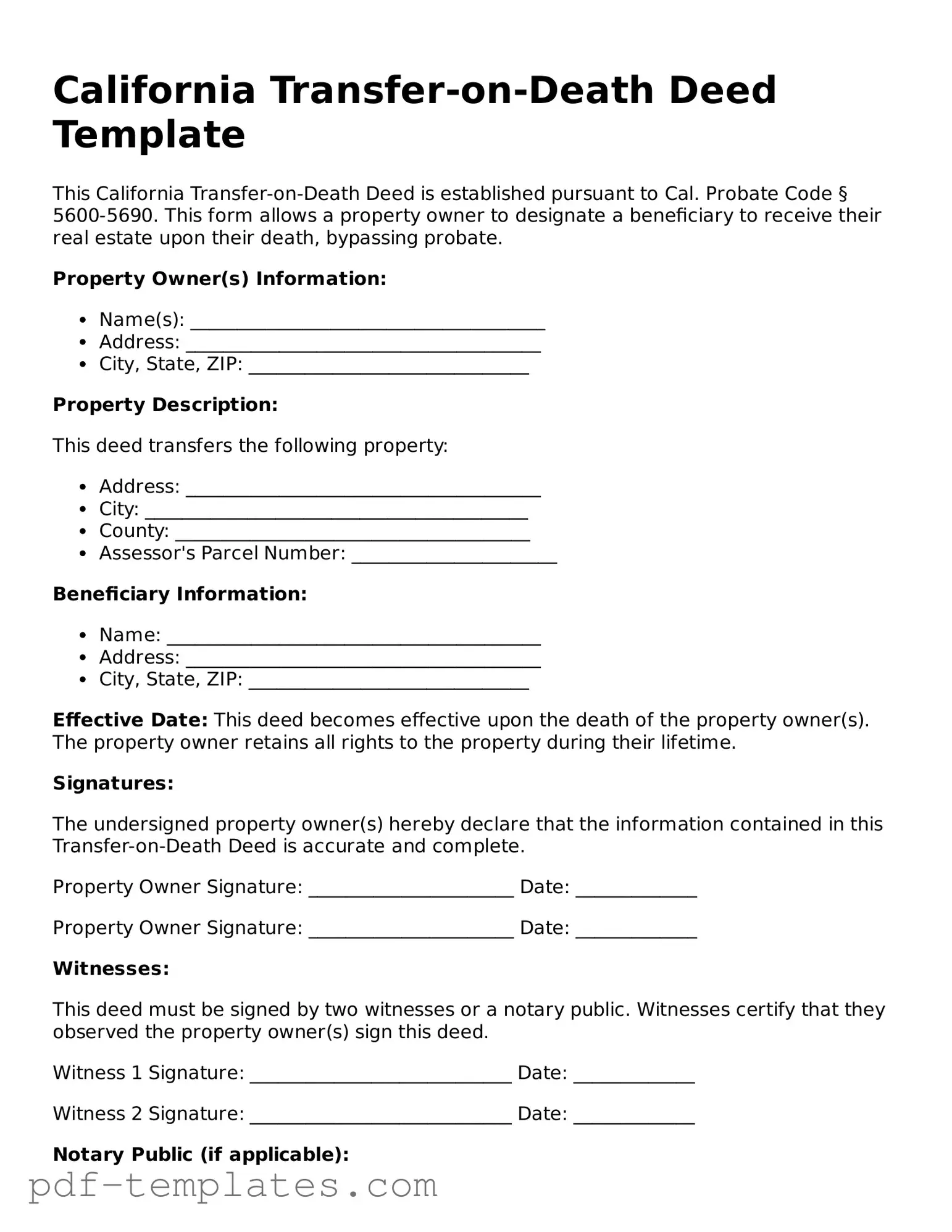Transfer on Death Deed Washington Form
- A common misconception is that this deed affects taxes; typically, it does not create any immediate tax consequences.
Understanding the nuances of traffic accident reporting is essential for every driver in California, particularly when it comes to the completion of the CA DMV SR1 form. This form is vital for documenting accidents that result in personal injury, death, or property damage exceeding $1,000. To ensure you have all the necessary paperwork in order, you may refer to All California Forms for comprehensive resources and support in filling out the required documentation accurately and timely.
Pennsylvania Transfer on Death Deed Form
- Beneficiaries named in the Transfer-on-Death Deed do not acquire any ownership or interest in the property until the owner's death.
Transfer on Death Deed Texas Form Free
- The deed can help ensure that property remains within the family, minimizing outside claims.
Where Can I Get a Tod Form
- Beneficiaries are not responsible for the property’s mortgage or unpaid taxes until the owner's death.
